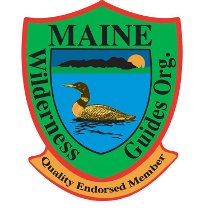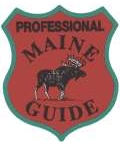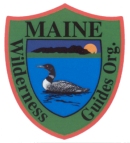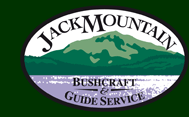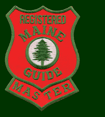Learning how to wash your clothing by hand with limited or no infrastructure, such as when on a long expedition or living off the grid for a length of time, is a useful skill to learn. It is one we are adding to our long-term programs because as the years go by, fewer and fewer people have done it, or even know how.
The easiest way I know of to do this is what we did with lightly-soiled clothing when I was a kid; dunk it in water, swish it around, then hang it on a line in the sun to dry. To this day on long canoe trips, washing clothes is often as simple as wearing them and sitting in the river for 5 minutes, then hanging them up to dry. Sometimes when the weather is warm I just keep them on, allowing them to air dry on my body.
But when clothes start to develop obvious stains, or start to smell, then some sort of soap is needed. More on types of soap in a bit.
A simple way to accomplish washing clothes is with a cook pot, clean 5-gallon bucket, or similar container. Add the clothing, some water, and laundry soap to the container. Then, in the water, wring and agitate the clothing, focusing on rubbing the dirty or smelly parts. Let it soak for a bit in the soapy water when you’re done, then do it again. Repeat if needed. Then remove the clothing and wring out as much soapy water as you can. Put the wrung-out clothes into a second clean bucket or container. I specify that the buckets are clean because we use 5-gallon buckets in our composting toilet system, and you don’t want to mix up your clean containers with these.
In the second clean container that holds the washed clothes, add water until 2/3 full. Then agitate them, wringing and rubbing, until they no longer emit soap into the water. This will likely take a few rounds of rinsing.
From here, wring them out and hang them on a clothesline. You’re done.
There are all sorts of ways you can dress up this process, from hand-held agitators to wash boards to mechanical wringers to computerized washing machines. But the basics endure. It is not a complicated process, although the modern world wants you to believe it is.
When living a bit rough, I like to wash the layers that are against my skin regularly. The outer insulation layers, if I keep them clean of sweat, grease and stains, not as often. So things like socks, underwear, long underwear, t-shirts, etc., get regular washing. It makes them more sanitary (ie. less gross) but also, with regard to living in the cold, allows them to insulate much better. It does this because clothing against your skin often contain dead skin cells, oils and salt from sweat, and other things that fill in the air spaces built into the fabric. The air spaces are what allow it to insulate you from the cold. So when they get full of gunk, it no longer insulates, or breathes. Have you ever worn a pair of wool socks for several days in cold weather? Ever notice how they are less warm with each passing day? This is why. So there are many good reasons to keep your stuff clean, while the only reason for not doing so is laziness.
With regards to soap, any soap that you use on your body or dishes will work. Some seem to work better than others, so pay attention and keep some notes on what has worked best for you.
Years ago we used to make our own soap for use when bathing. It worked well, but we got away from it although I don’t remember why. Another thing we made, which I learned in NH at a workshop with GALA (Global Awareness, Local Action), was our own laundry soap, useful for both laundry by hand and with modern laundry machines. It is all I have used for the past 8 years. It is concentrated, non-toxic, inexpensive, and works amazingly well. And you only use a tiny amount, so one container lasts a really long time. Scroll to the end of this post for how to make it.
Here’s a link to an argument to use soap over detergent for laundry because it is better for your clothes. Laundry Soap Vs. Detergent
Here’s a link to a bunch of useful videos and articles on doing your laundry by hand:
Permies.com
Keep your clothing clean. It will keep you warmer in winter (especially socks and long underwear) and cooler in summer (clean cotton breathes better). If you spend more than a few days living rough, it is something that you not only should know how to do, but also should have done multiple times so there are no mysteries left about the process.
Laundry Detergent – Makes 64oz., 128 Loads Of Laundry
- 1 (5.5oz) bar of “Fels Naptha”
- 1 cup “20 Mule Team Borax”
- 4 cups boiling water
- 1 cup “Arm & Hammer Washing Soda”
- 4 cups warm water
Step 1: Put 4 cups of water in a heavy saucepan to boil. While that is heating, mix the borax and washing soda in a bowl, mixing well.
Step 2: Grate the Fels Naptha.
Step 3: Add the freshly-grated Fels Naptha to the water in the saucepan, stirring constantly. Reduce the heat to medium. It will take 10-15 minutes for the soap to dissolve completely. Don’t let it boil over – gross.
Step 4: Remove the pan from the heat and add in the borax and washing soda. Stir until completely dissolved (3-5 minutes). Do not “under stir” or solution will be gritty. Pour liquid into a 2 quart container. Fill container the rest of the way with warm water. Mix.
Step 5: Store for 24 hours in a cool, dry place. Then mix.
Step 6: Add 1 tablespoon of mix to a load of laundry in any laundry machine. Add it directly with the dirty clothes, not in a “detergent compartment”.
Pro Tip: Add essential oils if you want your laundry to smell a certain way.




